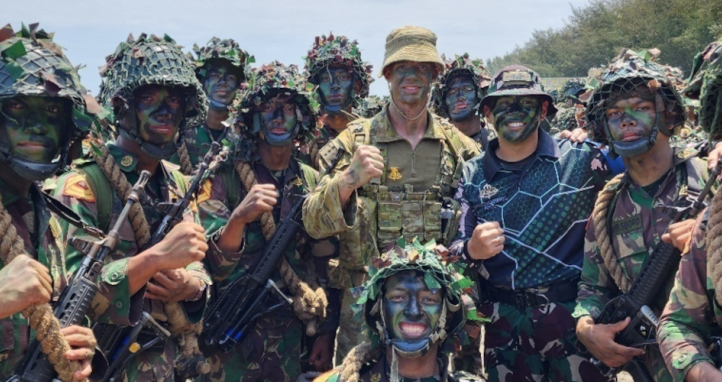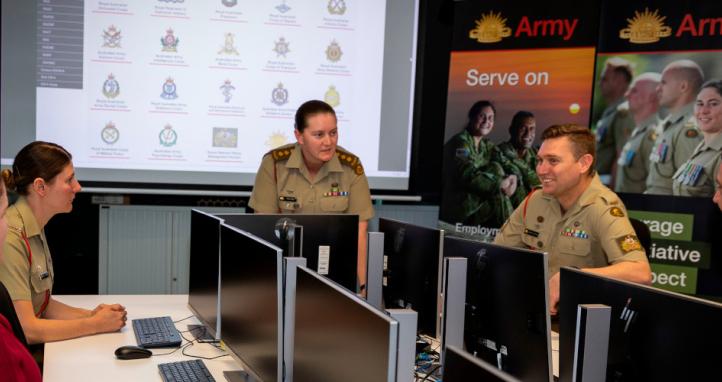Injuries, whether we like it or not, are a part of being in defence. For the Army to achieve its mission we must put ourselves in harm’s way by conducting realistic and challenging training. The reality of command is that members of the team are highly likely to be injured while building fighting capability and injuries will affect the whole team. However what we do to prepare for injuries is important. When injuries happen the right approach to bring the soldier back up to standard, to get them back in the fight and on the correct path, can make or break being able to achieve the Army’s mission. Throughout my time as a section commander at the Trainee Rehabilitation Wing (TRW)¹ I have found the soldiers have a higher chance of a successful return to their chosen job by having an active participation in their rehabilitation while being supported and managed intimately by their chain of command. However, with a little preparation commanders can prevent some injuries or at least speed up the recovery process.
Pre-injury
Prevention is better than cure and having strong and resilient soldiers is essential. Spending the time not just conducting robust Physical Training (PT) but teaching soldiers how to look after themselves, teaching them to stretch properly, to lift weights properly and to incorporate unit PT with personal PT will all go a long way to developing soldiers’ resilience to injury and allow them to recover quickly. This resilience is linked tightly with building a deeper knowledge base and using subject matter experts to teach your team as much as they can to help them in their own decision-making. When leaving TRW many of the soldiers make the comment, 'I wish I knew then what I know now' in relation to preparing for and dealing with injury.
Rehabilitation
Dealing with injured soldiers is a skill of its own. The major contributing factor to successfully commanding them is high emotional intelligence because each soldier needs to be dealt with individually as much as possible. This investment puts a massive admin and management burden on the commander, but is necessary for the successful rehabilitation of a soldier, both physically and mentally. Some strategies need to be identified other than treating them as a fully functional soldier. It is vital to have a tool box of strategies to deal with the rehabilitation process.
The physical rehabilitation of a soldier is often directed by health care professionals and commanders will not have much input into the activities that the soldiers have to undertake. Nevertheless, it does not mean that leaders should not have an understanding of what the soldier is required to do as they still need to be managed effectively. Ensuring that injured soldiers are completing all of the medically assigned tasks is just as important as ensure the soldier doesn’t do too much, which could lead to further injury.
My time at TRW has highlighted the impact that the chain of command’s demeanour can have on the mental state of soldiers. Remaining positive during rehabilitation is sometimes challenging but this is where the chain of command can influence and positively affect the mental state of their soldiers by simply being careful with their choice of words. Expectation management is important but delivering potentially bad news from a positive view-point is imperative for the health of the soldier.
Keeping the soldier meaningfully engaged is a must. There are programs that will help this happen externally to the unit but this is not the only method that can be used. Showing the soldier that they are still useful and wanted in and around their unit, while possibly not in their main role is key to maintaining their mental health. Feeling useful and that your contribution is meaningful, continues to hold a significance in a soldier’s life so make sure they feel needed and worthy.
The soldier may not recognise their injury as a learning opportunity to better understand their body, injury and how to maintain their new injury. If the soldier hasn’t been diligent in their rehab then this is the time where they can learn about their resilience both physically and mentally. The soldier should take away an overall feeling that they have learnt something from the experience.
As a person’s Identity can often be linked to their job satisfaction or their physical ability, dealing with an injury can be a trying time for some soldiers as they are no longer able to perform to their normal standard. It is up to the chain of command to support the soldier and identify the things that can be done rather than the things that can’t be done. This is also the opportunity to talk about the individual and support them with any problems they are having.
If a soldier is not coping mentally, or you feel that you can no longer support the soldier in a mental capacity due to the weight of the problem, it goes without saying to refer them onto someone who can get them the help they need. It is also good to let them know that they are able to self-refer to Open Arms (formerly VVCS) which is a valuable resource for soldiers that may need a sympathetic ear. Open Arms can listen to their story and give them the right advice to get them back on the right path. As a commander being able to trust someone else’s qualifications is everything when it comes to supporting the soldiers, Open Arms has those qualifications to help.
Post rehabilitation
Post rehabilitation is another crucial time during the rehabilitation process. Having just completed the requirements of the health care professionals the soldier’s fitness level may be low and rising slowly. The soldier may have some way to go before they are in a position to be fully utilised and it is possible they could be pushed too hard too soon. This is where having the advice of Physical Training Instructors (PTIs) and Combat Fitness Leaders (CFLs) to bridge the gap between where their fitness level is now to where it should be.
This is also the time when the soldier needs to develop their ability to maintain their body and know their injury. Understanding what needs to be done to maintain a healthy condition while managing an injury, whether they need more weight training or flexibility exercises, the soldier needs to be encouraged to seek out the CFLs and PTIs. Once again, this is to hone in on the specific items the soldier needs to target. Not to be overlooked, this is also the time to shore up their mental resilience. It is often at this recovery point that TRW trainees return to the training establishments, having reached all their exit goals trying to get out of PT 'to save themselves' and reduce output. They don’t understand what standard they are going back to and where they need to be physically for their job role.
At the end of the post rehabilitation period your soldiers need to be thinking that they are going into rehab before their next arduous task.
Conclusion
Injury is usually seen by most soldiers as a catastrophic derailment of their life. But with good management and support from the chain of command, a soldier that steps up and takes ownership of their rehabilitation and life will find that there are many positives that can come out of what is actually only a minor setback. Dealing with an injury is a life lesson and going through an injury builds resilience, builds strength of character and can allow the soldier to return to their job even mentally and physically stronger. A positive presence of command improves the outcome of rehabilitation. Being understanding and attentive to the needs of the individual will place soldiers in a much better mental state to return to work.
Prevention is better than cure. Taking the time to build your soldiers’ fitness to a level beyond that which is asked of them will give them a buffer. While this will not prevent all injuries it will at least make their comeback much easier. Mental health is just as important as physical health and getting it right early will keep your soldiers moving forward during the hard moments as they rehabilitate. Lastly, grow your soldiers’ knowledge, do it before it becomes a necessity due to injury, do it while they rehabilitate and do it once they have returned to work. Understanding how to prepare, rehabilitate and maintain high standards for your soldiers will improve their lives and Army capability. Accept your new mission totally and prepare accordingly.
Note:
1: Trainee Rehabilitation Wing (TRW) is Army’s rehabilitation unit for all personnel who have suffered a muscular-skeletal injury that will take them out of Initial Employment Training for more than 28 days. TRW is located at Holsworthy and is under command of the School of Military Engineering.




